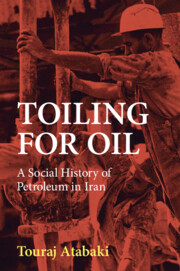Book contents
- Toiling for Oil
- Toiling for Oil
- Copyright page
- Dedication
- Contents
- Figures
- Maps
- Tables
- Note on Transliteration
- Preface and Acknowledgments
- Chronology
- Introduction
- 1 Oil Discovery and the Formation of a New Iranian Society
- 2 Oil and Labour in the First World War
- 3 Oil and Authoritarian Modernisation During Interwar Period
- 4 The Second World War: The Great Powers’ Rivalry for Oil
- 5 Poised to Leap: Towards Oil Nationalisation
- 6 Sovereignty’s Interlude: Iran’s Oil in 1951–1954
- 7 From Disparity to Planned Development: 1954–1962
- 8 Oil, Workforce, and the Developmental State: 1960s–1970s
- 9 Shop Floor Labour Activism: From the White to the Islamic Revolution
- Epilogue
- Notes
- Bibliography
- Index
- References
Bibliography
Published online by Cambridge University Press: 28 November 2024
- Toiling for Oil
- Toiling for Oil
- Copyright page
- Dedication
- Contents
- Figures
- Maps
- Tables
- Note on Transliteration
- Preface and Acknowledgments
- Chronology
- Introduction
- 1 Oil Discovery and the Formation of a New Iranian Society
- 2 Oil and Labour in the First World War
- 3 Oil and Authoritarian Modernisation During Interwar Period
- 4 The Second World War: The Great Powers’ Rivalry for Oil
- 5 Poised to Leap: Towards Oil Nationalisation
- 6 Sovereignty’s Interlude: Iran’s Oil in 1951–1954
- 7 From Disparity to Planned Development: 1954–1962
- 8 Oil, Workforce, and the Developmental State: 1960s–1970s
- 9 Shop Floor Labour Activism: From the White to the Islamic Revolution
- Epilogue
- Notes
- Bibliography
- Index
- References
- Type
- Chapter
- Information
- Toiling for OilA Social History of Petroleum in Iran, pp. 352 - 375Publisher: Cambridge University PressPrint publication year: 2024

